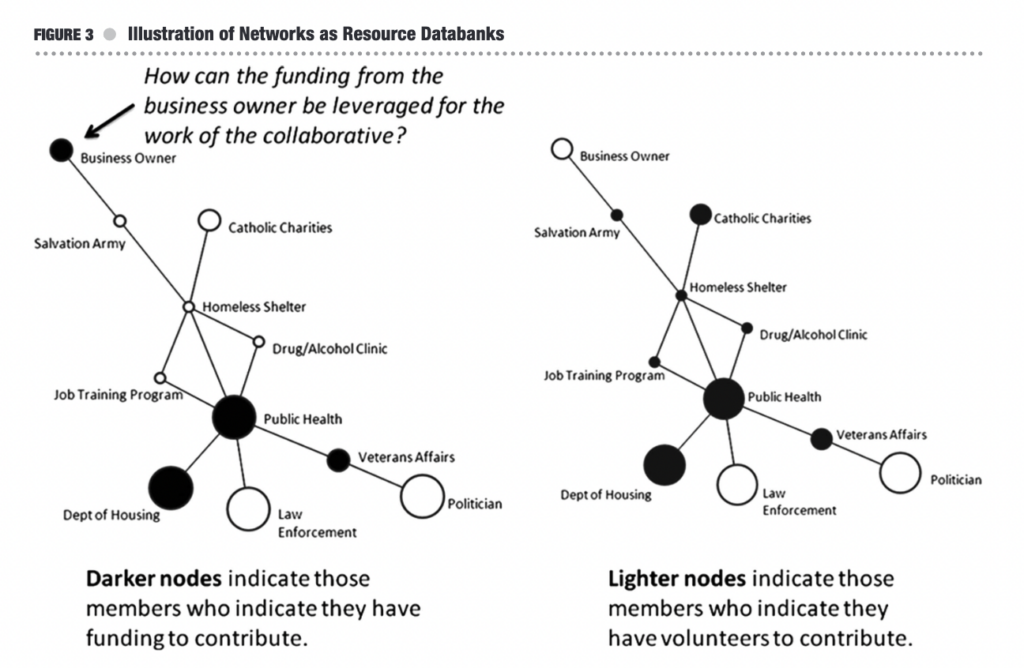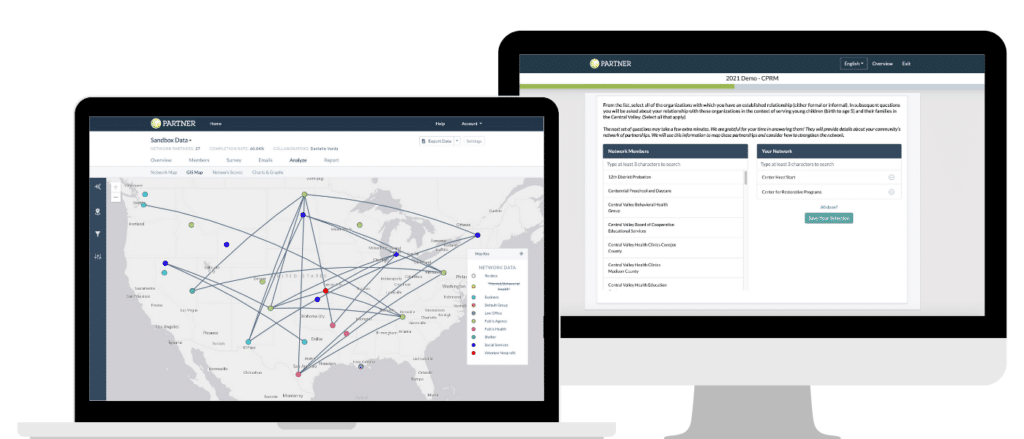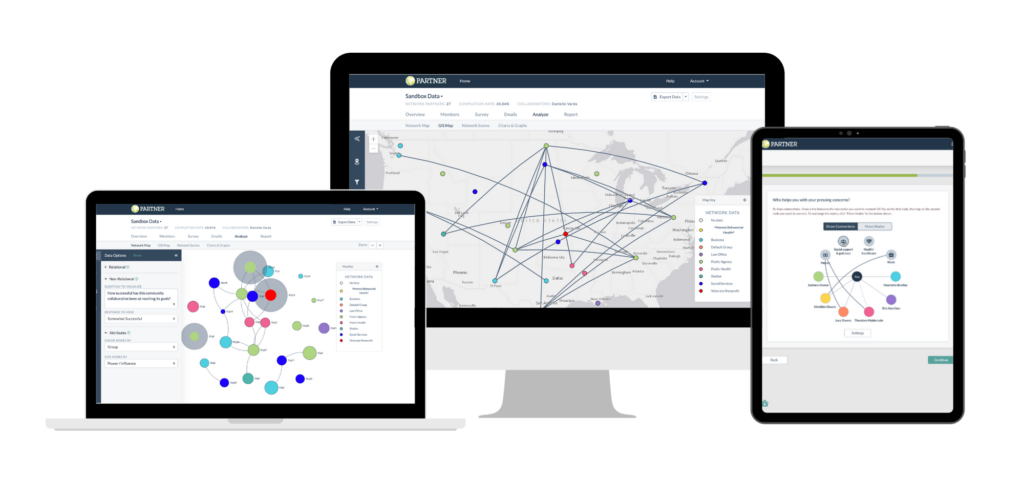
Navigating a Public Health Collaborative: 9 Research-Informed Lessons for Success
As experts in network science and public health systems, our team has witnessed firsthand the transformative potential of building an effective public health collaborative. These networks, comprised of diverse stakeholders from various sectors, have the power to address complex public health challenges and improve the well-being of communities. However, navigating the intricacies of inter-organizational collaboration can be daunting.
Drawing from our network research and more than a decade of practical experience, we have distilled a set of nine research-informed lessons for success in public health collaboratives. These insights will help you enhance trust, foster effective communication, and ultimately achieve better outcomes for your collaborative efforts. Whether you are a seasoned public health professional or a newcomer to the field, these lessons offer valuable guidance for your journey in the realm of multi-sector collaboration in public health. So, without further ado, let’s dive into these evidence-based strategies that will empower your collaborative to reach new heights of success.
About the Underlying Research
Before we dig into our findings and advice, we want to be transparent about where they are coming from. Our team has conducted numerous studies into the dynamics and structures that influence collaborative outcomes using a network science approach. One of our studies from 2013 specifically investigated public health collaboratives. We used social network analysis to look at data from 90+ Public Health Collaboratives nationwide. We asked what relationship, if any, exists between network structure metrics (like centrality, breadth, and density) with perceptions of collaborative success among the network’s partners. The entire paper is worth reading – but we’ve taken time to break down its findings and implications into nine lessons we think are most important.

9 Lessons for Public Health Collaborative Success
Many experienced network builders and leaders will recognize the tips and lessons below from their own work and experiences. However, our team found it reassuring and validating to find data and evidence to suggest that they aren’t just a hunch – they do work in practice. Here they are in no particular order.
1. Focus on building strong relationships
Establishing strong relationships among partners is crucial for a successful public health collaborative. Our study and others have found that density (the number of connections among members) is significantly related to trust, perceived value, and resource diversity. Encourage more interactions and communication within your collaborative, as higher density networks tend to have better outcomes. However, as our next lesson emphasizes, all things must be done with intention and balance.
2. Balance breadth and depth
While it’s essential to have diverse partners in a collaborative, our results found that excessive breadth may lead to challenges in reaching consensus and forming ties. Strive to find a balance between including a diverse range of organizations and maintaining a level of depth that allows for strong relationships and effective cooperation. Collaboratives with less breadth can more easily reach consensus on goals, a critical aspect of collaboration success.
3. Consider whether centralization can help
We noticed in our analysis that more decentralized collaboratives reported a greater number of outcomes, which suggests the network’s attention was divided among multiple competing priorities and goals. Consider centralizing key aspects of your collaborative, such as facilitation, governance, and fiduciary responsibilities, under a lead agency like a health department or healthcare organization. This approach can help reconcile challenges that arise from diverse organizational missions, cultures, and governance structures – though it is not always true. In some cases, networks may thrive using a collective governance model. It ultimately depends on your unique history and community context.
4. Prioritize trust building
Trust is a key factor in successful interorganizational collaborations. The study highlights the complexity of trust-building in networks, which depends on both organizational attributes and relationship aspects. Encourage open communication, transparency, and accountability to cultivate trust among members, which in turn can lead to increased cooperation and better outcomes. Trust takes time to develop but can be lost very quickly, necessitating a slow but steady approach with plenty of patience.

5. Monitor and evaluate network structures
Regularly assess your collaborative’s network structure to identify areas of strength and weakness, and adjust strategies accordingly. Our research found that network structure may influence collaborative outcomes in multiple ways, suggesting that structure itself is an important metric and process to watch closely. By monitoring and evaluating your network structures, you can make data-driven decisions to optimize your collaborative’s performance.
6. Manage resource contributions
Collaboratives with less breadth appear to have a higher number of resource contributions and higher agreement about their most important outcome. Manage resource contributions strategically, focusing on developing more intense relationships that can leverage resources effectively, rather than simply increasing the level of breadth in the collaborative. A focus on creating as many relationships as possible does not necessarily result in more resources available to leverage.
7. Set clear goals and outcomes
The study underlines the importance of consensus on goals for collaboration success. Clearly define goals and outcomes for your collaborative to ensure that all members are working towards a common purpose. Without them, alignment and coordination is impossible, wasting precious resources and passion in a disorganized process. A shared vision can help drive collaborative efforts and improve overall effectiveness.
8. Continuously learn and adapt
Both our study and our experience highlight the need for further research and understanding of how network processes relate to important outcomes in interorganizational collaboration. Embrace a culture of continuous learning and adaptation within your collaborative to stay responsive to new insights and evolving circumstances. This approach will help your collaborative remain dynamic and effective in the face of complex public health challenges.
9. Remember: There is no right way to build a collaborative
Lastly, our research continues to remind us that networks and collaboratives – like all systems – are extremely nuanced and dependent on their context and histories. Because of this diversity, what works for one network or partnership may not work for another, even if they are focused on similar issues and involve similar organizations. Instead of focusing on what other networks do and imitating their practices, try to focus on how they learned and connected – this is the key to co-creating your own solutions and innovations that fit your context and community needs.

Make it All Happen with PARTNER CPRM
Building trust, balancing breadth, managing shared resources, evaluating progress, learning, and adapting… how does one do it all? The first step is to centralize how you collect, manage, and share your collaborative partner data so you can begin tracking your progress and creating evidence-based strategies to improve.
PARTNER CPRM is our community partner relationship management platform, designed for this specific use case. You can use it to visualize your collaborative structure and quality, demonstrate your impact and link processes with outcomes, and create a data-driven collaborative strategy for the future. Our team is here to help with onboarding, design, implementation, and capacity-building to make the most of your experience.
Click here to learn more about PARTNER CPRM.
Navigating a Public Health Collaborative: The Last Word
Each collaborative will always look different, but there are some high-level areas of focus that every set of partnerships should keep in mind. By following these nine research-backed lessons, you’ll make your job much easier, working with partners and building a public health collaborative. If you have other advice, tips, or lessons to share with our community, please leave a comment below so others can hear it too.
FAQ: Hospital-Public Health System Collaboration
A: A public health collaborative is a partnership between various organizations, including government agencies, non-profits, academic institutions, and community groups, that work together to promote and protect public health through shared resources, expertise, and initiatives.
A: The main goals of a public health collaborative include improving population health outcomes, addressing health disparities, promoting health equity, and facilitating collaboration and communication between different stakeholders in public health.
A: Public health collaboratives often involve a diverse range of organizations such as government health departments, hospitals, academic institutions, non-profit organizations, community-based organizations, and private sector partners.
A: Collaboration is important in public health because it allows organizations to pool resources, share knowledge, and work together more effectively to tackle complex and interconnected health challenges that cannot be addressed by any single entity.
A: Public health collaboratives address health disparities and promote health equity by facilitating joint efforts to identify at-risk populations, target interventions, and allocate resources in a way that reduces inequities in health outcomes.
A: To get involved with a public health collaborative in your area, you can reach out to local public health departments, community organizations, or academic institutions that participate in such initiatives and inquire about volunteer or partnership opportunities.
A: To start a public health collaborative in your community, you can begin by identifying potential partner organizations, assessing local public health needs, and developing a shared vision and strategic plan that outlines goals, objectives, and collaborative activities.
A: Public health collaboratives can be funded through various sources, including government grants, private donations, in-kind contributions from partner organizations, and revenue generated through services or products provided by the collaborative.
Additional Public Health Collaborative Resources:
Looking for more information to strengthen your public health collaborative goals and processes? Here are some additional websites and resources to continue your research.
- Implications of Network Structure on Public Health Collaboratives
- The Colorado National Collaborative: A public health approach to suicide prevention
- Coalition Building I: Starting a Coalition: Community Tool Box
- Coalitions for Impacting the Health of a Community: The Summit County, Ohio, Experience
- The West Central Public Health Partnership: A Case Study in Public Health Collaboration





